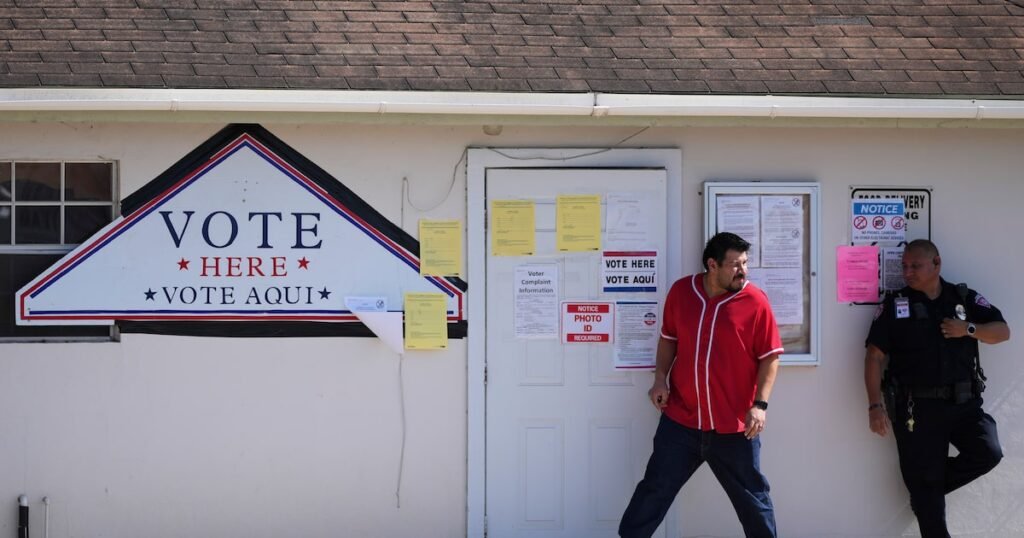Understanding the Shift in the Rio Grande Valley: The Impact of Hurricane Donald on Texas Politics
The political landscape in the Rio Grande Valley has undergone a significant transformation post-Election Day, marking a notable shift from a traditionally Democratic stronghold to a more Republican-friendly territory. This change, often referred to as “Hurricane Donald,” profoundly impacts voting patterns and long-standing party affiliations in this region known for its high Hispanic population.
A Surprising Election Outcome
In the recent elections, former President Donald Trump won a decisive victory against Vice President Kamala Harris across 12 out of the 14 Texas counties bordering Mexico, including what many viewed as bastions of Democratic support. This shift raises questions about the future of political affiliations in the Rio Grande Valley, especially in key counties such as Cameron, Hidalgo, Willacy, and Starr.
Historically, these counties have been a stronghold for the Democratic Party. For instance, in Starr County, over 97% of residents are Latino, and the county hadn’t voted for a Republican presidential candidate for more than a century—until now, when Trump garnered nearly 58% of the vote. This dramatic pivot challenges preconceived notions about Latino voting behaviors, particularly in light of Trump’s controversial immigration policies.
Factors Behind the Shift
Despite predictions that Trump’s immigration stance would alienate Latino voters, the reality was quite different. The once-sturdy Democratic majority in the Valley faced a perfect storm of economic discontent and evolving political sentiments. In prior elections:
- Barack Obama defeated Mitt Romney in Starr County by 73 percentage points (2012).
- Hillary Clinton outperformed Trump by 60 points in 2016.
- Joe Biden still held a narrow lead over Trump in 2020 but faced diminished margins.
Fast-forward to 2024, and the same demographic, spurred by economic concerns, turned to Trump. The Rio Grande Valley grapples with high poverty rates and limited job opportunities, particularly in sectors tied to the oil and gas industry. This critical economic context creates fertile ground for Republican messages centered on economic stability and job security.
Economic Concerns: The Driving Force
Political scientist Brandon Rottinghaus of the University of Houston emphasizes that rural parts of Texas, particularly in areas like the Valley, are increasingly leaning Republican due to perceptions of economic threats posed by Democratic policies. Many residents expressed concerns about the future of the oil and gas industry, which are major employers in the area.
Economy-related worries are not isolated. The quiet streets lined with boarded-up businesses tell a story of globalization’s adverse effects, driving locals to seek reliable economic solutions through different political channels.
The Role of Republican Outreach
Governor Greg Abbott’s Operation Lone Star aims to tackle illegal immigration while providing substantial funds to local businesses and law enforcement. This operation has effectively integrated Republican initiatives into the daily lives of Valley residents, garnering attention and support for the GOP.
Local Republican leaders, including Abraham George, the Texas GOP chair, have actively turned the tide by enhancing grassroots efforts, voter engagement, and financial support for local Republican candidates. In Cameron County, the awakening of a previously dormant Republican Party reflects this resurgence, led by new chair Deborah Bell who revitalized the local infrastructure.
Messaging and Advertising Dynamics
During the campaign, contrasting advertisements played a crucial role in shaping voter perceptions. Democrats focused on potential threats to women’s health and reproductive rights. In contrast, Republicans framed their messaging around border security, fiscal responsibility, and economic stability, resonating more effectively with local concerns.
Despite the Republican surge, some Democrats, such as incumbents Henry Cuellar and Vicente Gonzalez, managed to retain their seats albeit with slim margins. Gonzalez highlighted that the Democratic Party risks further alienating local voters by focusing on issues that don’t resonate with the community’s immediate concerns.
Future Implications for Texas Democrats
The Rio Grande Valley’s dramatic electoral shift signals a need for introspection among Texas Democrats. In the wake of these results, state party chair Gilberto Hinojosa announced his resignation, urging the party to recalibrate its focus on issues important to constituents, primarily the economy.
As the 2026 elections loom, the implications of this year’s results command immediate attention. Democrats must navigate the precarious political landscape carefully, ensuring they adequately address citizens’ concerns or face a repeat of Hurricane Donald.
Conclusion
The shift in the Rio Grande Valley underscores a broader trend affecting electoral politics in the region. With economic issues taking center stage, both parties must reassess their strategies to remain relevant in a changing political environment. As history shows, unanticipated growth in support for the Republican Party reflects deeper currents that are likely to shape Texas politics for years to come.
For those interested in following these developments more closely, a deeper exploration into voter sentiment and economic conditions in rural Texas can provide valuable insights into the shifting dynamics of American politics.


